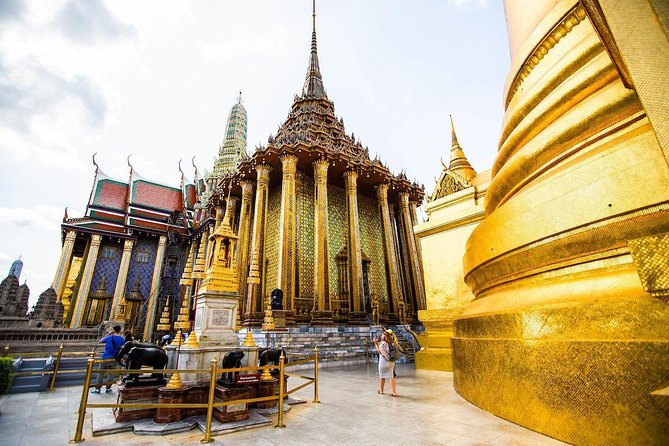Have you ever wondered what it would be like to live like a king or queen? Well, you’re in luck because in this article we will be taking you on a royal tour of Thailand’s majestic palaces. Get ready to immerse yourself in the rich history and grandeur of Thai royalty as we explore these stunning architectural marvels. From the opulent Grand Palace to the peaceful Bang Pa-In Summer Palace, you will discover the stories behind each palace and learn more about the fascinating world of Thai monarchy.
Let’s start our journey with the iconic Grand Palace in Bangkok. This magnificent complex is a must-visit for anyone interested in Thai history and culture. From its stunning architecture to its intricate designs, every corner of the Grand Palace tells a story. Get ready to be awed by the sacred Temple of the Emerald Buddha, which houses one of the most revered Buddha statues in the country. Make sure to dress respectfully as this is a religious site and be prepared to be captivated by the beauty and grandeur of this royal residence.
Next, we will head to the Bang Pa-In Summer Palace, located just outside of Bangkok. This enchanting retreat was once a favorite getaway for Thai kings and queens. Take a leisurely stroll through the palace grounds and admire the blend of architectural styles, from Chinese pavilions to European-inspired mansions. Don’t miss the stunning Thai-style “Aisawan Dhipaya-Asana” pavilion, seemingly floating on the tranquil lake. It’s no wonder that this palace is often referred to as the “Versailles of the East”.
In our upcoming article, we will dive deeper into the history of these royal palaces, exploring the myths and legends that surround them. We will also provide you with practical information and tips for visiting these remarkable sites. So, get ready to embark on a royal adventure and discover the magnificence of Thailand’s palaces. Stay tuned!
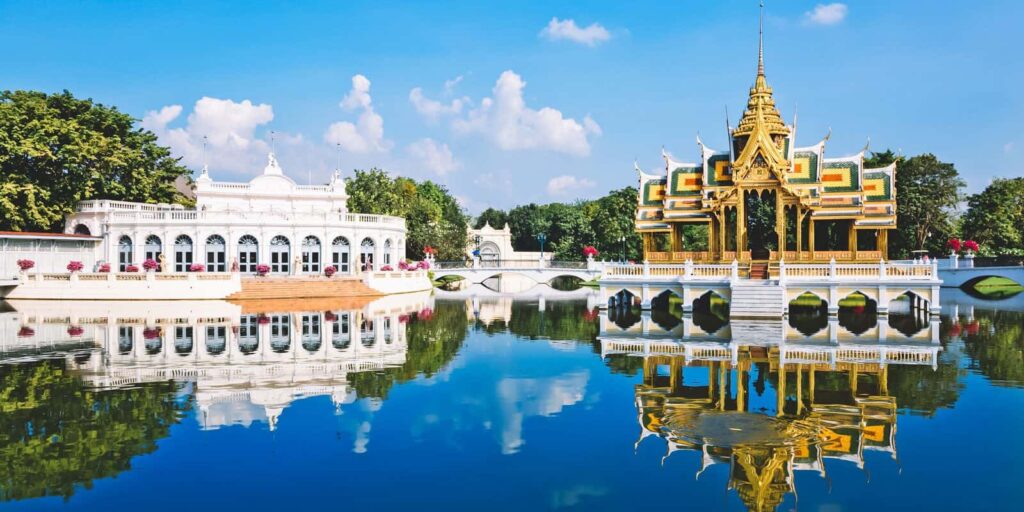
A Royal Tour: Exploring Thailand’s Majestic Palaces
Thailand is a country known for its rich cultural heritage and majestic landmarks, and its royal palaces are no exception. These palaces, scattered throughout the country, serve as a testament to Thailand’s royal history and offer a glimpse into the lives of its revered monarchs. From the iconic Grand Palace in Bangkok to the coastal retreat of the Royal Palace of Hua Hin, each palace has its own unique charm and significance. Embark on a royal tour of Thailand and discover the enchanting world of its majestic palaces.
The Grand Palace: A Symbol of Thai Royalty
No tour of Thailand’s palaces is complete without a visit to the iconic Grand Palace in Bangkok. This sprawling complex, which served as the official residence of the Kings of Thailand for over 150 years, is a must-see attraction for both locals and tourists. Stepping into the Grand Palace is like entering a different world, with its intricate architectural details, opulent decorations, and stunning works of art.
History and Significance of the Grand Palace
The history of the Grand Palace dates back to 1782 when it was commissioned by King Rama I, the founder of the Chakri Dynasty. Over the years, the palace complex underwent expansion and renovation under the reign of subsequent kings. It served as the official residence of the Thai kings until 1925 and is now used for ceremonial purposes only.
The Grand Palace holds significant historical and cultural importance for the Thai people. It is not only a symbol of the Thai monarchy but also a reflection of the nation’s power and grandeur. The palace complex houses several important buildings, including the Temple of the Emerald Buddha and the Inner Court, which was once the residence of the Thai kings.
Architecture and Design of the Grand Palace
The architecture and design of the Grand Palace are a blend of Thai, European, and Chinese influences. The complex features intricate decorative elements, gilded roofs, and colorful murals, which are typical of Thai Buddhist architecture. The intricate details and the meticulous craftsmanship of the buildings make the Grand Palace a true architectural masterpiece.
The Emerald Buddha Temple: A Spiritual Gem
Within the Grand Palace complex, visitors can find the Temple of the Emerald Buddha, also known as Wat Phra Kaew. This temple is home to the highly revered statue of the Emerald Buddha, which is considered the most sacred religious relic in Thailand. The statue is meticulously carved from a single block of jade and is clothed in gold garments according to the changing seasons.
The Emerald Buddha Temple is not only a place of worship but also a showcase of Thai art and culture. The walls of the temple are adorned with exquisite murals depicting scenes from Buddhist scriptures, while the exterior is decorated with ornate statues and demon guards.
The Inner Court: Residence of Thai Kings
Located within the Grand Palace complex, the Inner Court offers a glimpse into the private lives of Thai royalty. This area was once off-limits to the public and served as the royal residence. Its elegant buildings and lush gardens create an atmosphere of tranquility and beauty.
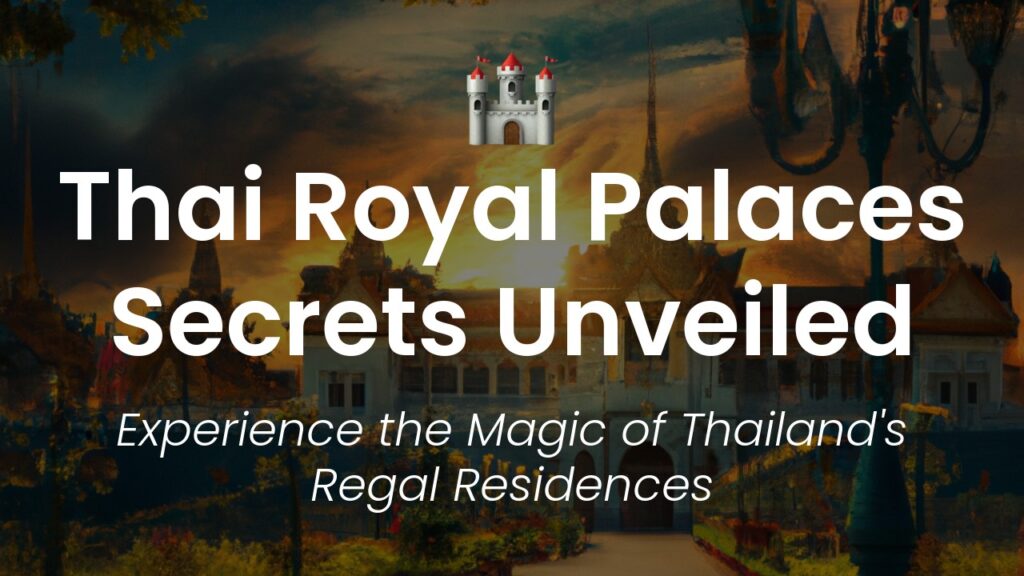
Bang Pa-In Royal Palace: A Fusion of Architectural Styles
Located just outside of Bangkok, the Bang Pa-In Royal Palace is a testament to Thai architectural diversity. This sprawling palace complex features a blend of Thai, European, and Chinese architectural styles, reflecting the multicultural influences that shaped Thai society.
A Brief History of Bang Pa-In Palace
The history of Bang Pa-In Palace can be traced back to the 17th century, when it was initially used as a retreat by the Ayutthaya kings. Over the years, the palace underwent multiple renovations and expansions, with each king leaving his mark on the complex. Today, the palace complex serves as a favorite summer residence for the Thai royal family.
Distinctive Architectural Styles in Bang Pa-In Palace
One of the most fascinating aspects of Bang Pa-In Palace is the wide array of architectural styles found within its grounds. From the elegant Thai-style buildings with their intricate woodwork to the European-inspired structures adorned with columns and arches, the palace complex is a visual feast for architecture enthusiasts.
The eclectic mix of styles is best exemplified by the iconic Aisawan Dhiphya-Asana Pavilion, also known as the Divine Seat of Personal Freedom. This elaborate pavilion, built in the middle of a picturesque pond, combines Thai, Chinese, and European architectural elements, creating a unique and visually stunning masterpiece.
Notable Buildings within the Palace Grounds
Bang Pa-In Palace is home to several notable buildings, each with its own story and significance. The Phra Thinang Aisawan Thiphya-Art is a small but beautifully designed Thai pavilion, while the Ho Withun Thasana offers panoramic views of the surrounding landscape. The Wehat Chamrun Residential Hall, built in a Thai-style wooden pavilion, is another noteworthy structure that showcases the elegance and craftsmanship of traditional Thai architecture.
The Divine Seat of Personal Freedom: A Unique Pavilion
Arguably the most iconic structure within the palace complex is the Aisawan Dhiphya-Asana Pavilion, also known as the Divine Seat of Personal Freedom. This stunning pavilion is built entirely of golden teakwood and features intricately carved details inspired by both Thai and Chinese design aesthetics.
The pavilion stands in a lotus pond, surrounded by lush gardens and tall palm trees, creating a serene and picturesque setting. Its unique design and tranquil location make it a favorite spot for visitors seeking a moment of reflection.
The Royal Palace of Hua Hin: A Coastal Retreat for the Royals
Nestled along the pristine coastline of the Gulf of Thailand, the Royal Palace of Hua Hin is a delightful escape from the bustling city life. This beachside palace complex has long been a favored retreat for the Thai royal family, offering a picturesque setting and a serene atmosphere.
Royal Lineage of the Hua Hin Palace
The Royal Palace of Hua Hin has its roots in the late 19th century when it was initially built by King Rama IV as a summer residence. Since then, it has passed down through generations of Thai monarchs, with each adding their own touches and expansions to the palace complex.
Chitralada Palace: The Summer Residence of Thai Monarchs
Within the grounds of the Royal Palace of Hua Hin lies the Chitralada Palace, which serves as the main residence for members of the Thai royal family during their visits. This elegant palace features a distinctive mix of Thai and Western architectural styles and offers stunning views of the surrounding gardens and beach.
Klai Kangwon Palace: The Presently Used Royal Residence
The current residence of the Thai royal family when they visit the Royal Palace of Hua Hin is the Klai Kangwon Palace. Built in the early 20th century, this palace showcases a blend of Thai and colonial architectural styles. The name “Klai Kangwon” translates to “far from worries,” reflecting the serene and peaceful atmosphere that pervades the palace.
The Intricate Beauty of Hua Hin Palace’s Decoration
The Royal Palace of Hua Hin is renowned for its exquisite decorations and meticulously manicured gardens. Intricately carved wooden facades, vibrant murals, and delicate ceramic tiles adorn the walls and ceilings of the palace buildings, creating a visually stunning and culturally rich environment.
With its lush gardens, colorful flowers, and neatly trimmed hedges, the exterior of the palace is just as enchanting as its interior. Visitors can stroll through the beautifully landscaped gardens, enjoy the breeze from the Gulf of Thailand, and immerse themselves in the idyllic coastal setting.
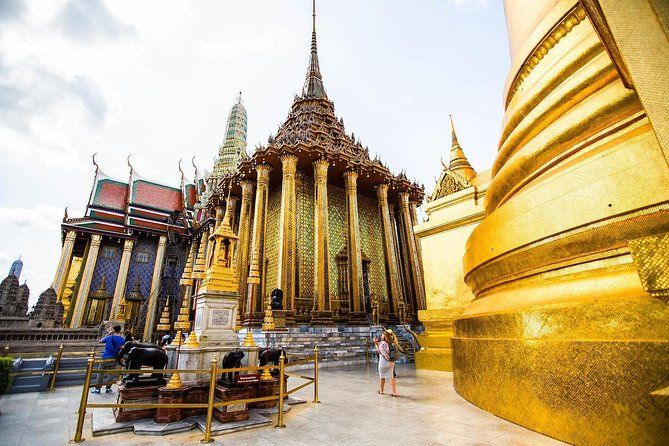
Dusit Palace: The Seat of Thai Government
Located in the heart of Bangkok, Dusit Palace has played a significant role in Thai history and serves as the seat of Thai government. This palace complex is a reflection of both the country’s rich cultural heritage and its modern aspirations.
A Historical Overview of Dusit Palace
Built at the turn of the 20th century, Dusit Palace was a visionary project initiated by King Rama V. The king aimed to create a new royal quarter that showcased the modernization efforts of Thailand while preserving its traditional values. Today, Dusit Palace stands as a testament to the king’s vision and ambition.
The Vimanmek Mansion: World’s Largest Teakwood Mansion
The Vimanmek Mansion is the centerpiece of the Dusit Palace complex and holds the distinction of being the world’s largest teakwood mansion. Built entirely out of golden teakwood, the mansion features intricate carvings, elegant furnishings, and ornate decorations, providing a glimpse into the opulent lifestyle of Thai royalty.
Anantasamakhom Throne Hall: A Symbol of Thai Independence
One of the most striking structures within the Dusit Palace complex is the Anantasamakhom Throne Hall. This grand building, constructed in an Italian Renaissance-inspired style, served as the legislative assembly hall during Thailand’s transition from an absolute monarchy to a constitutional monarchy. Today, it is used for important royal ceremonies and state functions.
Dusit Zoo: A Royal Menagerie Turned Public Park
Within the Dusit Palace complex, visitors can also explore the Dusit Zoo, which was originally a private menagerie for the royal family. Over the years, it has evolved into a public park and a popular destination for families and animal enthusiasts. The zoo houses a wide variety of animals, including elephants, tigers, and giraffes, making it a perfect place for a leisurely stroll or a picnic.
Phra Pathom Chedi: The Oldest Stupa in Thailand
Located in the ancient city of Nakhon Pathom, the Phra Pathom Chedi is a sacred monument that holds great religious and historical significance for the Thai people. This ancient stupa is considered the oldest and tallest of its kind in Thailand and is revered as a symbol of Buddhism.
Origin and Significance of Phra Pathom Chedi
The history of Phra Pathom Chedi dates back over 2,000 years when Buddhism was first introduced to the region. The stupa was built to enshrine a relic of the Buddha, making it a sacred pilgrimage site for Buddhists from around the world.
Phra Pathom Chedi holds great spiritual importance for the Thai people, serving as a symbol of their faith and devotion to Buddhism. It embodies the teachings of the Buddha and acts as a spiritual beacon for those seeking enlightenment.
Architecture and Features of Phra Pathom Chedi
The architecture of Phra Pathom Chedi reflects the different periods of its construction, with each layer representing a distinct architectural style. The base of the stupa showcases early Dvaravati influences, while the upper tiers feature characteristics of the Lopburi and Ayutthaya periods.
Standing at a height of over 120 meters, Phra Pathom Chedi dominates the landscape, offering panoramic views of the surrounding countryside. The stupa is adorned with intricate carvings and decorative elements, showcasing the craftsmanship of the artisans who built it.
Religious and Historical Importance of Phra Pathom Chedi
Phra Pathom Chedi holds a significant place in Thai history and culture. It is believed to be the site where Buddhism was first introduced to the region and has since served as a center for Buddhist teachings and meditation. The stupa has undergone numerous renovations and restorations throughout the centuries, ensuring its preservation and continued importance to the Thai people.
Phra Pathom Chedi Festival: A Celebration of Buddhism
Every year, thousands of Buddhists gather at Phra Pathom Chedi for the Phra Pathom Chedi Festival. This week-long celebration includes religious ceremonies, processions, and cultural performances, making it a vibrant and joyous occasion. The festival offers visitors a chance to immerse themselves in Thai culture, witness traditional rituals, and pay their respects to the stupa.
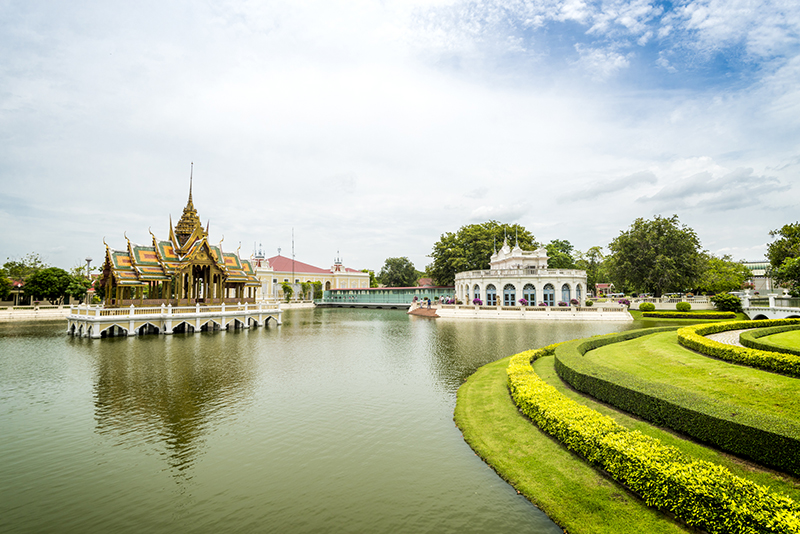
Discovering Thai Royalty
Embarking on a tour of Thailand’s palaces is an immersive experience that allows you to delve deeper into the country’s rich cultural heritage and royal traditions. As you explore these majestic palaces, you will gain a deeper understanding of Thai royal customs and traditions and appreciate the unique architecture that sets each palace apart.
An Immersive Experience: Exploring Thailand’s Palaces
Visiting Thailand’s palaces is not just about sightseeing; it offers a chance to immerse yourself in the country’s history and culture. From the intricate details of the Grand Palace to the serene coastal retreat of the Royal Palace of Hua Hin, each palace offers a unique experience that transports you to a different era.
Understanding Thai Royal Tradition and Customs
Thai royal tradition and customs play an integral role in Thai society. The Thai monarchy is highly revered, and certain protocols and rules must be followed when visiting royal palaces. It is important to dress modestly and respectfully and to conduct oneself with courtesy and decorum.
Appreciating the Unique Architecture of Thai Palaces
Thai palaces showcase a wide range of architectural styles, reflecting the rich cultural influences that have shaped Thailand’s history. From the ornate Thai-style buildings of the Grand Palace to the fusion of styles at Bang Pa-In Palace, each palace offers a fascinating glimpse into the evolution of Thai architecture.
The Impact of Royalty on Thai Culture and Society
Thailand’s monarchy has had a profound impact on its culture and society. The royal family is seen as a unifying force that promotes national unity and stability. The Thai people take great pride in their monarchy, and the traditions and customs associated with the royal family are deeply ingrained in their daily lives.
Exploring Thai Royal Heritage
Thailand’s royal palaces not only serve as cultural landmarks but also contribute to the country’s tourism industry. These palaces attract millions of visitors each year, who come to learn about Thai history, admire the architectural marvels, and experience the rich cultural heritage firsthand.
Promoting Tourism Through Royal Palaces
Thailand’s royal palaces play a crucial role in promoting tourism and attracting visitors from around the world. The sheer beauty and historical significance of these palaces have made them must-see destinations for travelers seeking an authentic Thai experience.
Preservation Efforts to Safeguard Thai Royal Heritage
Preserving Thailand’s royal heritage is of utmost importance to the Thai government. Efforts are made to maintain the palaces’ original structures and artifacts and to safeguard them from the ravages of time and natural disasters. Restoration projects ensure that future generations can continue to admire these magnificent palaces.
Unveiling the Rich History and Stories Within the Palaces
Beyond their architectural beauty, Thailand’s royal palaces are repositories of history and stories waiting to be discovered. Each palace holds tales of royal ceremonies, personal anecdotes of the royal family, and cultural traditions that have been passed down through generations. Exploring these palaces is like stepping back in time and unraveling the secrets of Thailand’s royal past.
Tourist Etiquette and Respectful Behavior in Royal Palaces
When visiting Thailand’s royal palaces, it is essential to observe proper etiquette and respectful behavior. Visitors should dress modestly, remove their shoes before entering temples, and refrain from touching or sitting on any sacred objects. It is also important to be mindful of noise levels and to follow any instructions given by palace staff.

The Cultural Significance
Thailand’s royal palaces are not just architectural wonders; they carry great cultural significance and have played an integral role in shaping Thai identity.
Symbolism and Spirituality in Thai Royalty
Thai royalty is deeply rooted in symbolism and spirituality. The palaces themselves are imbued with spiritual significance, with their unique designs and ornate decorations designed to evoke a sense of awe and reverence.
Influence of Thai Royalty on Traditional Arts and Crafts
Thai royalty has been a patron of the arts for centuries, supporting and promoting traditional crafts and cultural practices. The grandeur and elegance of the palaces are a testament to the rich artistic traditions that have been nurtured and preserved by the Thai royal family.
Royal Ceremonies and Rituals: A Window into Thai Culture
Thai royal ceremonies and rituals offer a window into Thai culture and traditions. From the spectacular coronation ceremonies to the annual Royal Ploughing Ceremony, these events showcase the magnificence and grandeur of Thai royal customs.
The Royal Family: An Integral Part of Thai Identity
The Thai royal family holds a special place in the hearts of the Thai people, serving as a symbol of national pride and unity. The royal family’s dedication to public service and their close connection to the Thai people have earned them the respect and adoration of the nation.
Conclusion
Embarking on a royal tour of Thailand’s palaces is a journey into the heart of Thai culture and history. From the iconic Grand Palace in Bangkok to the tranquil Royal Palace of Hua Hin and the majestic Phra Pathom Chedi, each palace offers a unique experience that will leave you in awe of Thailand’s royal heritage.
As you explore these magnificent palaces, you will gain a deeper appreciation for Thai architecture, learn about the customs and traditions associated with Thai royalty, and witness firsthand the cultural significance of these historical landmarks.
Thailand’s palaces are not just cultural treasures; they are a testament to the country’s glorious royal heritage. By preserving and showcasing these magnificent palaces, Thailand ensures that future generations can continue to marvel at the legacy left by its revered monarchs.
